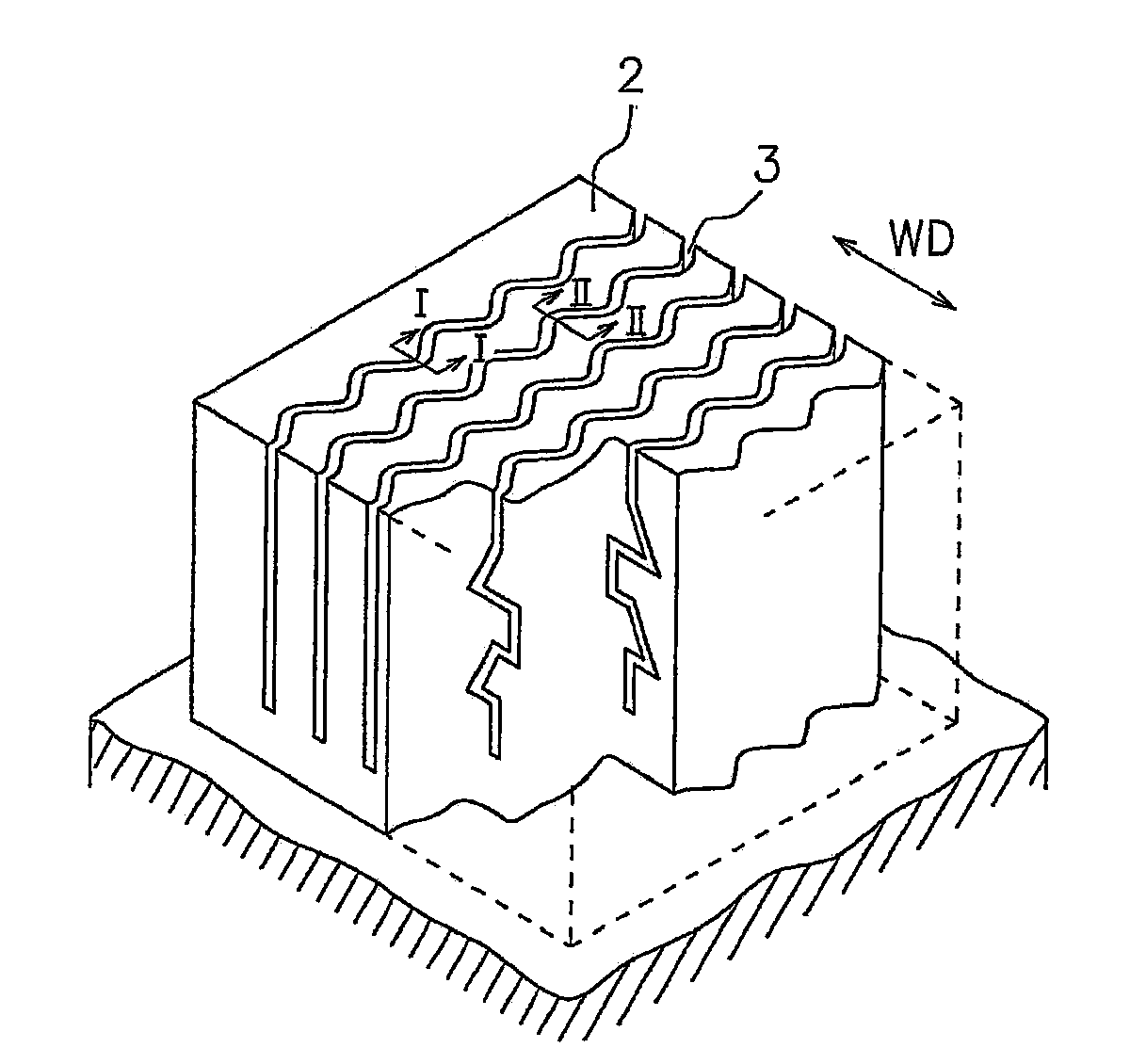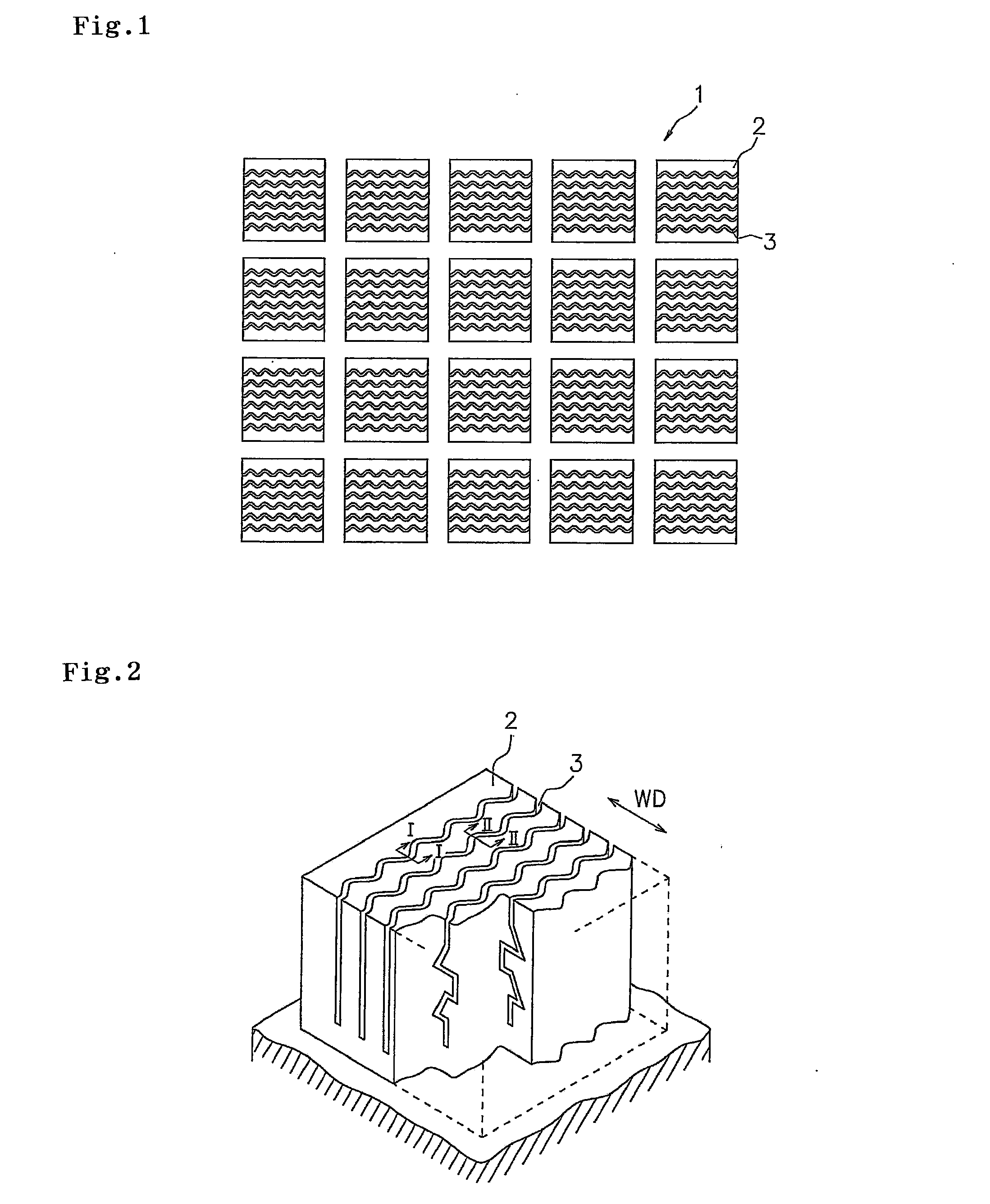Pneumatic Tire
a pneumatic tire and tire body technology, applied in the field of pneumatic tires, can solve the problems of reducing the edge effect, the on-ice performance accordingly, and the sipes are easily yielded adversely, and achieves the effect of large engagement force, sufficient engagement force, and large engagement for
- Summary
- Abstract
- Description
- Claims
- Application Information
AI Technical Summary
Benefits of technology
Problems solved by technology
Method used
Image
Examples
examples
[0040]Examples and Comparative Examples, which demonstrate structure and effect of the present invention, will be described below. Performance evaluation of tires was conducted as described below.
[0041](1) On-Ice Braking Performance
[0042]Test tires (size 205 / 65R15) were mounted on an actual vehicle (3000 cc class FR sedan, made in Japan), with a load of one passenger, and driven on iced road surface. While driving the vehicle at a speed of 40 km / h, brake was applied and ABS was activated. Defining braking distance of conventional tires (Comparative Example 1) as 100, the braking distance was indicated with using an index to evaluate. As the value increases, the tire exhibited more satisfactory on-ice braking performance.
[0043](2) Dry Braking Performance
[0044]Test tires (size 205 / 65R15) were mounted on an actual vehicle (3000 cc class FR sedan, made in Japan), with a load of one passenger, and driven on dry road surface (paved road). While driving the vehicle at a speed of 40 km / h, b...
example 1
[0045]Pneumatic tires, each of which has a tread pattern shown in FIG. 1 and is formed with sipes 3 having a configuration shown in FIGS. 2 to 4, was prepared. The width of the sipe 3 was set to 0.3 mm; the depth D of the sipe 3 was set to 7 mm; ½ length T of the amplitude of the wavy line in the surface of the block 2 was set to 0.7 mm; maximum length T1 of the flat plane portion 4a of the concave portion 4 in the width direction of the sipe was set to 1.4 mm; the length D1 of the convex portion 5 in the depth direction of the sipe was set to 1.3 mm; and the length D2 of the concave portion 4 in the depth direction of the sipe was set to 1.3 mm. Using these tires, the above-described performance evaluation test was conducted. The test result is shown in Table 1.
PUM
 Login to View More
Login to View More Abstract
Description
Claims
Application Information
 Login to View More
Login to View More - R&D
- Intellectual Property
- Life Sciences
- Materials
- Tech Scout
- Unparalleled Data Quality
- Higher Quality Content
- 60% Fewer Hallucinations
Browse by: Latest US Patents, China's latest patents, Technical Efficacy Thesaurus, Application Domain, Technology Topic, Popular Technical Reports.
© 2025 PatSnap. All rights reserved.Legal|Privacy policy|Modern Slavery Act Transparency Statement|Sitemap|About US| Contact US: help@patsnap.com



